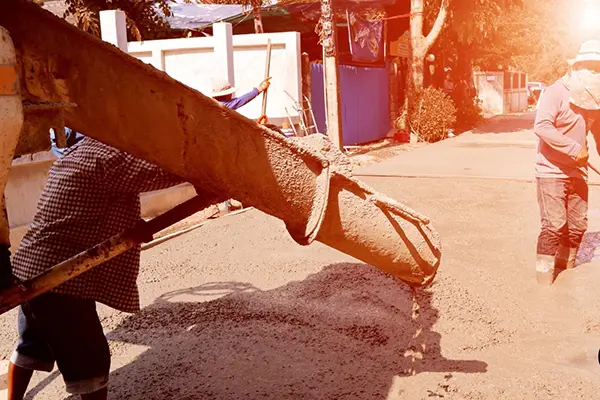nsuring Concrete Resilience in Hot Weather: Strategies for Protecting Concrete in High Temperatures
In the realm of construction, concrete stands as a fundamental material, employed in a vast array of structures and applications. However, hot weather conditions pose a significant challenge to concrete curing and strength development. Excessive heat can lead to rapid water evaporation, reduced workability, and potential cracking, compromising the integrity of concrete structures. To effectively protect concrete in hot weather, a combination of strategies and admixtures are essential.
Understanding the Challenges of Concrete Curing in Hot Weather
As temperatures rise above 75°F (24°C), the rate of water evaporation from concrete increases dramatically. This rapid drying can hinder the hydration process, the chemical reaction that causes concrete to harden and gain strength. Consequently, hot weather conditions can lead to:
-
Reduced Workability: Concrete becomes less workable, making it difficult to place and finish properly.
-
Plastic Shrinkage Cracking: Rapid water evaporation can cause plastic shrinkage, leading to hairline cracks on the surface of the concrete.
-
Delayed Strength Gain: The reduced hydration rate slows down the development of concrete strength, increasing the risk of premature loading or damage.
-
Increased Setting Time: The setting time of concrete may be extended, affecting construction schedules and productivity.
Strategies for Protecting Concrete in Hot Weather
To mitigate the adverse effects of hot weather on concrete curing, a comprehensive approach is necessary:
-
Temperature Monitoring: Regularly monitor ambient temperatures and adjust concrete placement schedules accordingly. Avoid pouring concrete during the hottest part of the day.
-
Wind Protection: Protect freshly placed concrete from direct sunlight and wind to minimize moisture loss and prevent rapid drying. Use windbreaks, sunshades, or curing blankets.
-
Moisture Control: Implement effective moisture control measures to prevent premature drying. Apply curing compounds or water sprays to keep the concrete surface moist.
-
Proper Mix Design: Optimize the concrete mix design for hot weather conditions. Use lower water-cement ratios, consider supplementary cementitious materials, and incorporate appropriate admixtures.
-
Ice Cooling: Incorporate ice or chilled water into the concrete mix to lower the initial concrete temperature and slow down the hydration rate.
Concrete Additives for Hot Weather Protection
Concrete admixtures play a critical role in enhancing concrete performance and protecting it from the detrimental effects of hot weather:
-
Retarding Admixtures: These admixtures delay the initial setting time of concrete, providing more time for proper placement and finishing in hot conditions.
-
Water-Reducing Admixtures: These admixtures improve the workability of concrete by reducing the amount of water required while maintaining strength.
-
Air-Entraining Admixtures: These admixtures introduce microscopic air bubbles into the concrete matrix, enhancing workability and reducing the risk of plastic shrinkage cracking.
-
Shrinkage-Reducing Admixtures: These admixtures minimize the overall shrinkage of concrete, reducing the susceptibility to cracking.
-
Set Accelerators: In certain cases, set accelerators may be used to counteract the retarding effects of hot weather on setting time. However, careful selection and application are crucial to avoid excessive acceleration.

Conclusion
Protecting concrete in hot weather demands a proactive and comprehensive approach. By employing effective strategies, such as temperature monitoring, moisture control, and proper mix design, along with the use of appropriate concrete admixtures, construction professionals can ensure the quality and integrity of concrete structures in challenging hot weather conditions. As the construction industry adapts to the changing climate, understanding and implementing strategies for hot weather concrete protection will become increasingly crucial for delivering durable and resilient structures.
Post time: 11 月-29-2023




